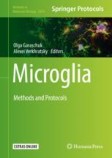Search
Search Results
-
Mouse cytomegalovirus-experienced ILC1s acquire a memory response dependent on the viral glycoprotein m12
Innate lymphoid cells (ILCs) are tissue-resident sentinels that are essential for early host protection from pathogens at initial sites of infection....

-
Immune-related prognosis biomarkers associated with osteosarcoma microenvironment
BackgroundOsteosarcoma is a highly aggressive bone tumor that most commonly affects children and adolescents. Treatment and outcomes for osteosarcoma...

-
Newly characterized bovine mammary stromal region with epithelial properties supports representative epithelial outgrowth development from transplanted stem cells
Limited outgrowth development of bovine mammary epithelial stem cells transplanted into de-epithelialized mouse fat pads restricts advanced studies...

-
The transcriptome of peripheral blood mononuclear cells in patients with clinical subtypes of late age-related macular degeneration
BackgroundPeripheral blood mononuclear cells (PBMCs) are implicated in the pathogenesis of age-related macular degeneration (AMD). We here mapped the...

-
Functional Analysis of Brain-Engrafted Monocytes After Microglia Ablation in Mouse Models
During insults and disease blood-borne monocytes can invade brain and spinal cord, contributing to the neuroimmune response together with...
-
Metabolic reprogramming of terminally exhausted CD8+ T cells by IL-10 enhances anti-tumor immunity
T cell exhaustion presents one of the major hurdles to cancer immunotherapy. Among exhausted CD8 + tumor-infiltrating lymphocytes, the terminally...

-
Basophil-derived tumor necrosis factor can enhance survival in a sepsis model in mice
Basophils are evolutionarily conserved in vertebrates, despite their small numbers and short life span, suggesting that they have beneficial roles in...

-
Subsets of ILC3−ILC1-like cells generate a diversity spectrum of innate lymphoid cells in human mucosal tissues
Innate lymphoid cells (ILCs) are tissue-resident lymphocytes categorized on the basis of their core regulatory programs and the expression of...

-
The lung environment controls alveolar macrophage metabolism and responsiveness in type 2 inflammation
Fine control of macrophage activation is needed to prevent inflammatory disease, particularly at barrier sites such as the lungs. However, the...

-
Correlate tumor mutation burden with immune signatures in human cancers
BackgroundTumor mutation burden (TMB) has been associated with cancer immunotherapeutic response and cancer prognosis. Although many explorations...

-
Longitudinal genome-wide DNA methylation analysis uncovers persistent early-life DNA methylation changes
BackgroundEarly life is a period of drastic epigenetic remodeling in which the epigenome is especially sensitive to extrinsic and intrinsic...

-
CD200R1 agonist attenuates glial activation, inflammatory reactions, and hypersensitivity immediately after its intrathecal application in a rat neuropathic pain model
BackgroundInteraction of CD200 with its receptor CD200R has an immunoregulatory role and attenuates various types of neuroinflammatory diseases.
...
-
Short-Term Effects of Sepsis and the Impact of Aging on the Transcriptional Profile of Different Brain Regions
Among the clinical manifestations observed in septic patients, sepsis-associated encephalopathy (SAE) is probably the most obscure and poorly...

-
Inflammasome and Oral Diseases
One of the main steps in the development of the life in the earth is multicellularity. It enables cell differentiation and the development of...
-
Peripheral Blood Monocyte Tolerance Alleviates Intraperitoneal Lipopolysaccharides-Induced Neuroinflammation in Rats Via Upregulating the CD200R Expression
Neuroinflammation is an important pathogenesis of Parkinson’s disease (PD). The peripheral immune system could produce profound effects on central...

-
Sensing of physiological regulators by innate lymphoid cells
Maintenance of homeostasis and immune protection rely on the coordinated action of different physiological systems. Bidirectional communication...

-
Innate Immune Mechanisms and Herpes Simplex Virus Infection and Disease
Innate immune responses play a major role in the control of herpes simplex virus (HSV) infections, and a multiplicity of mechanisms have emerged as a...
-
Sneaky Entry of IFNγ Through Arsenic-Induced Leaky Blood–Brain Barrier Reduces CD200 Expression by Microglial pro-Inflammatory Cytokine
Recent studies showed that neuronal surface protein CD200 plays a key role in the regulation of neuroinflammation. Previously, we showed that arsenic...

-
CD200Fc reduces TLR4-mediated inflammatory responses in LPS-induced rat primary microglial cells via inhibition of the NF-κB pathway
ObjectiveBased on recent information, CD200Fc, a CD200R1 agonist, could attenuate the inflammatory response of microglial cells in autoimmune...

-
Microglial signatures and their role in health and disease
Microglia are the primary innate immune cells in the CNS. In the healthy brain, they exhibit a unique molecular homeostatic ‘signature’, consisting...

